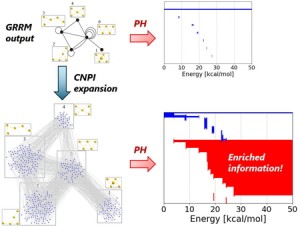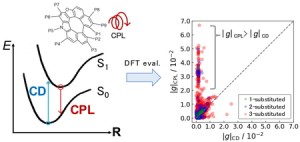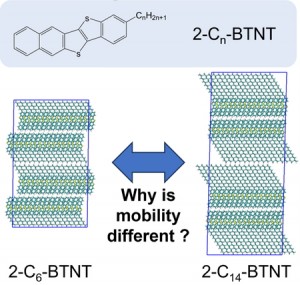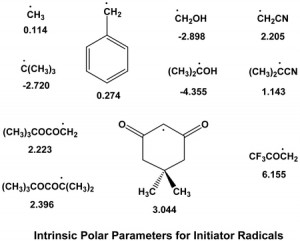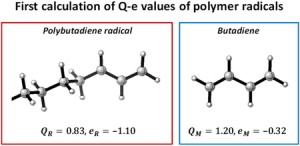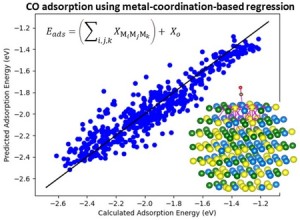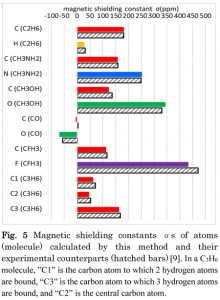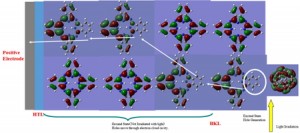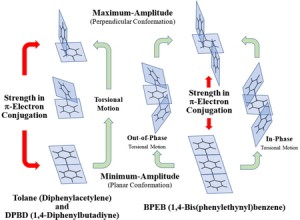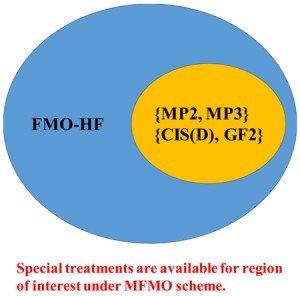[Published online Journal of Computer Chemistry, Japan Vol.23, 33-36, by J-STAGE]
<Title:> ポテンシャルエネルギー曲面の新記述子:反応経路地図のパーシステント・ホモロジー
<Author(s):> 村山 武来, 小林 正人, 青木 雅允, 石橋 卓, 齋藤 琢弥, 中村 壮伸, 寺本 央, 武次 徹也
<Corresponding author E-Mill:> k-masato(at)sci.hokudai.ac.jp
<Abstract:> A reaction route map (RRM), which is a collection of elementary reaction pathways, contracts the potential energy surface (PES) with 3N – 6 variables (N: the number of atoms) into a weighted graph representation. Although the automated construction of RRMs has greatly contributed to the accurate understanding of chemical reaction mechanisms, only a small fraction of networks with low activation energies are relevant to actual chemical reactions, and thus studies focusing on the entire RRM have not been conducted. In this letter, we summarize our recent approach to applying the persistent homology (PH) analysis to the graph structure of an RRM.
<Keywords:> Keywords Potential energy surface, Reaction route map, Persistent homology
<URL:> https://www.jstage.jst.go.jp/article/jccj/23/1/23_2024-0007/_article/-char/ja/
<Title:> ポテンシャルエネルギー曲面の新記述子:反応経路地図のパーシステント・ホモロジー
<Author(s):> 村山 武来, 小林 正人, 青木 雅允, 石橋 卓, 齋藤 琢弥, 中村 壮伸, 寺本 央, 武次 徹也
<Corresponding author E-Mill:> k-masato(at)sci.hokudai.ac.jp
<Abstract:> A reaction route map (RRM), which is a collection of elementary reaction pathways, contracts the potential energy surface (PES) with 3N – 6 variables (N: the number of atoms) into a weighted graph representation. Although the automated construction of RRMs has greatly contributed to the accurate understanding of chemical reaction mechanisms, only a small fraction of networks with low activation energies are relevant to actual chemical reactions, and thus studies focusing on the entire RRM have not been conducted. In this letter, we summarize our recent approach to applying the persistent homology (PH) analysis to the graph structure of an RRM.
<Keywords:> Keywords Potential energy surface, Reaction route map, Persistent homology
<URL:> https://www.jstage.jst.go.jp/article/jccj/23/1/23_2024-0007/_article/-char/ja/
